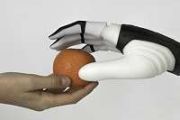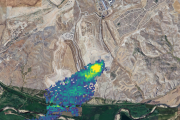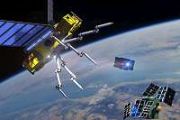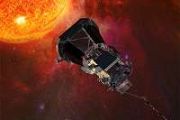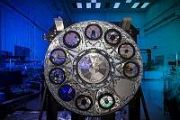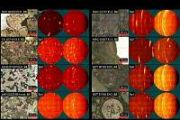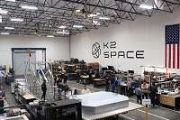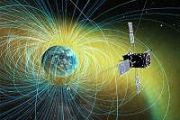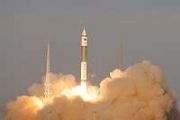
Copernical Team
Solar panels from Moon dust may revolutionize lunar energy supply
 In a significant advance for lunar sustainability, scientists have fabricated solar cells using simulated Moon dust, offering a lightweight, radiation-resistant energy source for future Moon missions. The research, published April 3 in Device, a journal from Cell Press, outlines a new approach that could drastically reduce the need to ship bulky materials from Earth.
"Current space-grade s
In a significant advance for lunar sustainability, scientists have fabricated solar cells using simulated Moon dust, offering a lightweight, radiation-resistant energy source for future Moon missions. The research, published April 3 in Device, a journal from Cell Press, outlines a new approach that could drastically reduce the need to ship bulky materials from Earth.
"Current space-grade s Rocket Lab launches tailored solar arrays for next gen satellite missions
 USA, Inc. (Nasdaq: RKLB) has unveiled a new suite of customizable solar arrays, branded as STARRAY, aimed at addressing the broad spectrum of satellite power demands across all orbital environments. The official debut took place during the 40th Space Symposium in Colorado Springs, Colorado.
STARRAY systems are engineered for adaptability, delivering power outputs ranging from around 100 wa
USA, Inc. (Nasdaq: RKLB) has unveiled a new suite of customizable solar arrays, branded as STARRAY, aimed at addressing the broad spectrum of satellite power demands across all orbital environments. The official debut took place during the 40th Space Symposium in Colorado Springs, Colorado.
STARRAY systems are engineered for adaptability, delivering power outputs ranging from around 100 wa Microbial profile mapped aboard China space station
 Efforts to understand how microgravity shapes microbial life have long been hampered by limited data from the International Space Station (ISS), primarily due to the technical challenges of sustained experimentation in orbit. Now, China's new space station offers an expansive opportunity to deepen our grasp of microbial dynamics in space habitats.
Launched under the China Space Station Hab
Efforts to understand how microgravity shapes microbial life have long been hampered by limited data from the International Space Station (ISS), primarily due to the technical challenges of sustained experimentation in orbit. Now, China's new space station offers an expansive opportunity to deepen our grasp of microbial dynamics in space habitats.
Launched under the China Space Station Hab Rx Networks launches TruePoint FOCUS to deliver real-time centimeter precision
 Rx Networks Inc., a leader in global navigation satellite system (GNSS) data services, has announced the debut of TruePoint FOCUS, a cloud-powered correction platform that provides near-instantaneous centimeter-level accuracy for positioning applications.
Engineered for precision-driven industries, TruePoint FOCUS caters to use cases that require consistent real-time accuracy. It supports
Rx Networks Inc., a leader in global navigation satellite system (GNSS) data services, has announced the debut of TruePoint FOCUS, a cloud-powered correction platform that provides near-instantaneous centimeter-level accuracy for positioning applications.
Engineered for precision-driven industries, TruePoint FOCUS caters to use cases that require consistent real-time accuracy. It supports Multi-Orbit and Multi-Partnership Strategies Shape the Future of Inflight Connectivity
 Inflight connectivity providers are making substantial advances in network strategy, hardware integration, and operator partnerships, reflecting the sector's shift toward scalable, high-performance services across multiple orbits and technologies. Several recent announcements from Eutelsat, Panasonic Avionics, SES, Intelsat, ThinKom, and Quvia demonstrate the competitive momentum behind multi-or
Inflight connectivity providers are making substantial advances in network strategy, hardware integration, and operator partnerships, reflecting the sector's shift toward scalable, high-performance services across multiple orbits and technologies. Several recent announcements from Eutelsat, Panasonic Avionics, SES, Intelsat, ThinKom, and Quvia demonstrate the competitive momentum behind multi-or A football field of archives shaped the identity of the Royal Observatory
 The vast archival legacy of George Biddell Airy, former director of the Royal Observatory, Greenwich, stretches 110 meters across the Cambridge University Library shelves-roughly the length of a football field. In a new paper published in Isis: the Journal of the History of Science Society, historian Yuto Ishibashi explores how Airy's meticulous approach to recordkeeping and standardization deep
The vast archival legacy of George Biddell Airy, former director of the Royal Observatory, Greenwich, stretches 110 meters across the Cambridge University Library shelves-roughly the length of a football field. In a new paper published in Isis: the Journal of the History of Science Society, historian Yuto Ishibashi explores how Airy's meticulous approach to recordkeeping and standardization deep Aitech launches compact AI-powered satellite platform for next-gen Earth and space intelligence
 Built upon more than three decades of space-proven electronic systems and trillions of miles of cumulative flight heritage, Aitech has introduced the IQSat, an ultra-compact, AI-enabled picosatellite platform capable of forming large-scale constellations. The new system enables broad, persistent coverage of the Earth, offering real-time insights into life patterns, environmental change, and stra
Built upon more than three decades of space-proven electronic systems and trillions of miles of cumulative flight heritage, Aitech has introduced the IQSat, an ultra-compact, AI-enabled picosatellite platform capable of forming large-scale constellations. The new system enables broad, persistent coverage of the Earth, offering real-time insights into life patterns, environmental change, and stra Eclipse quiets birds only in zones of near-total darkness
 A landmark study using community-sourced audio data has revealed that bird song diminished significantly only in areas of near-complete solar coverage during the April 8, 2024, total eclipse. The research, featured in Scientific Reports, marks the first scientific deployment of the Haikubox acoustic monitoring network.
Conducted by researchers at Loggerhead Instruments and the K. Lisa Yang
A landmark study using community-sourced audio data has revealed that bird song diminished significantly only in areas of near-complete solar coverage during the April 8, 2024, total eclipse. The research, featured in Scientific Reports, marks the first scientific deployment of the Haikubox acoustic monitoring network.
Conducted by researchers at Loggerhead Instruments and the K. Lisa Yang Solar wind compressions spark massive heatwaves on Jupiter
 A powerful solar wind surge that dramatically compressed Jupiter's magnetic boundary has been recorded for the first time, revealing unexpected heating effects across the gas giant's upper atmosphere.
University of Reading researchers uncovered this 2017 event in which a dense solar wind stream slammed into Jupiter, crushing its magnetosphere and generating a superheated zone across half t
A powerful solar wind surge that dramatically compressed Jupiter's magnetic boundary has been recorded for the first time, revealing unexpected heating effects across the gas giant's upper atmosphere.
University of Reading researchers uncovered this 2017 event in which a dense solar wind stream slammed into Jupiter, crushing its magnetosphere and generating a superheated zone across half t Saturn's moon Titan could harbor life, but only a tiny amount, study finds
 Titan, Saturn's largest moon, is a strange, alien world. Covered in rivers and lakes of liquid methane, icy boulders and dunes of soot-like "sand," its topography has long fascinated scientists and invited speculation on whether lifeforms might lurk beneath the moon's thick, hazy atmosphere.
An international team of researchers co-led by Antonin Affholder at the U of A Department of Ecolog
Titan, Saturn's largest moon, is a strange, alien world. Covered in rivers and lakes of liquid methane, icy boulders and dunes of soot-like "sand," its topography has long fascinated scientists and invited speculation on whether lifeforms might lurk beneath the moon's thick, hazy atmosphere.
An international team of researchers co-led by Antonin Affholder at the U of A Department of Ecolog 








